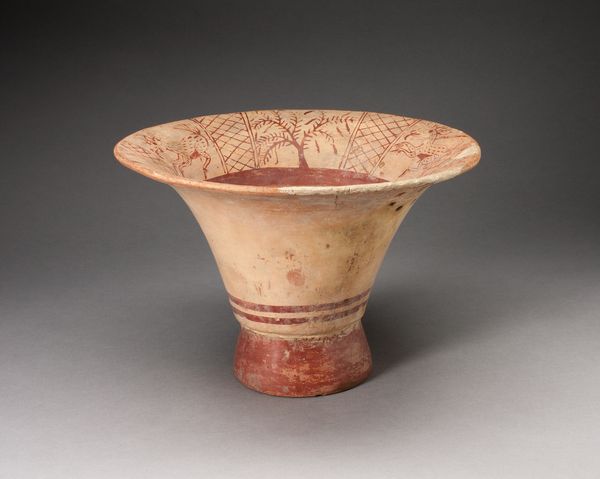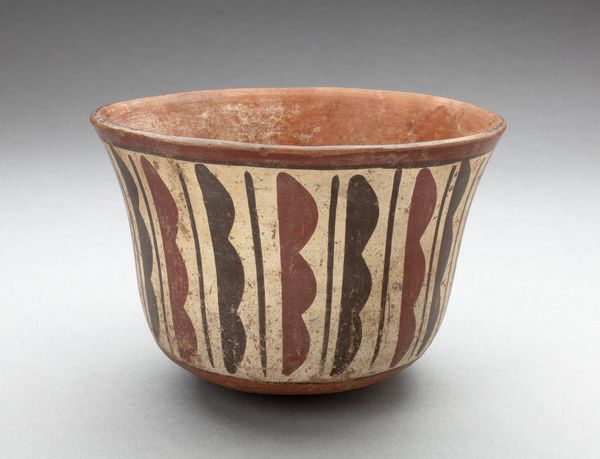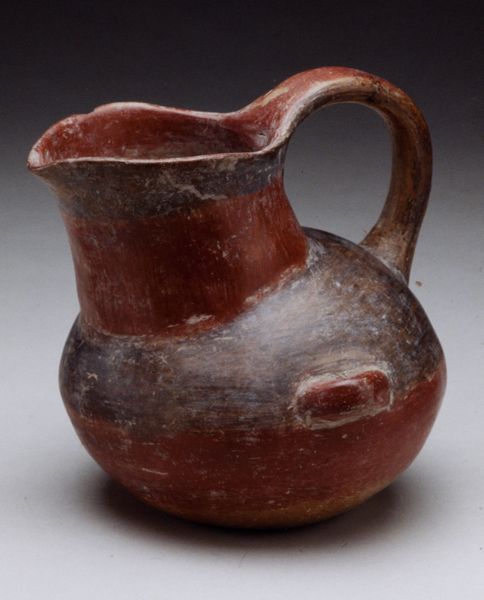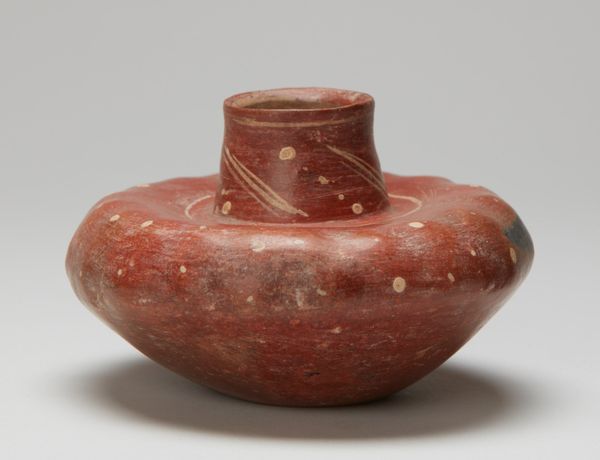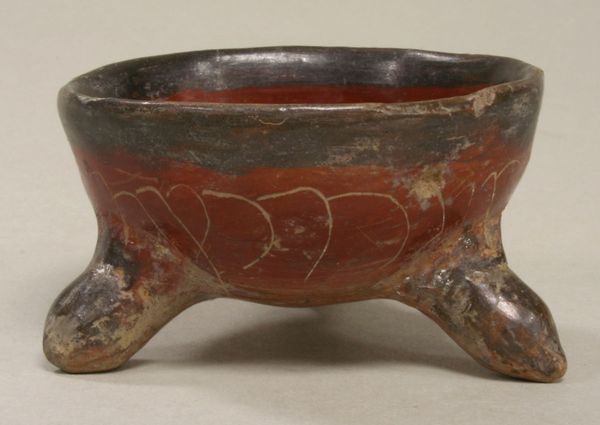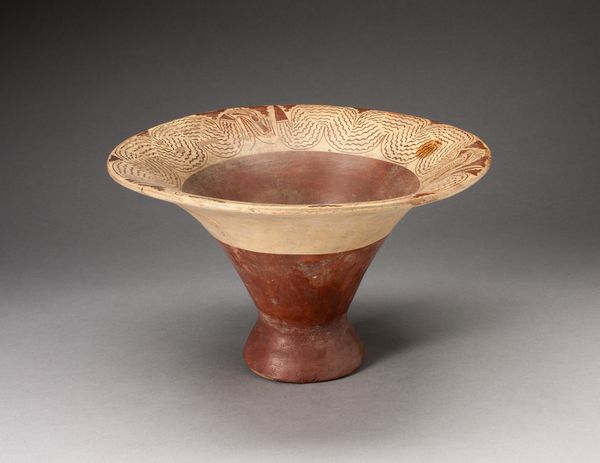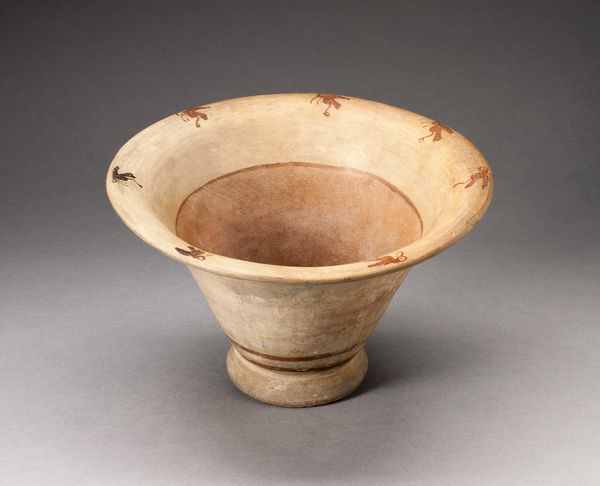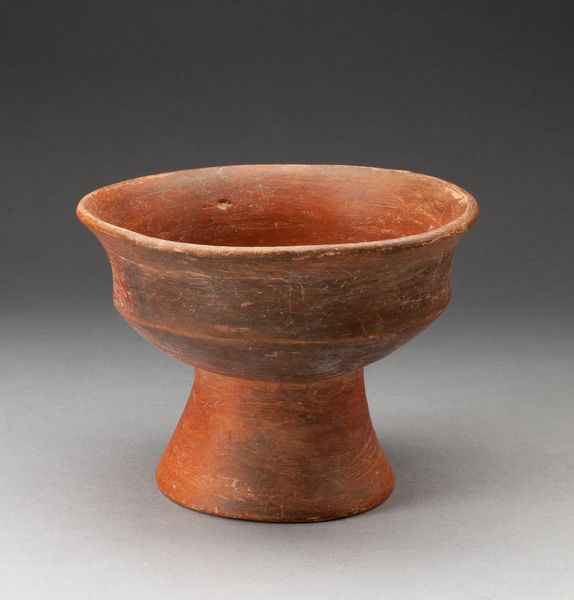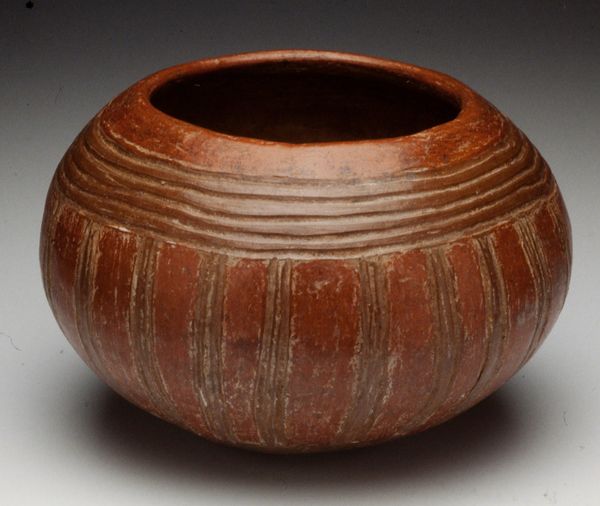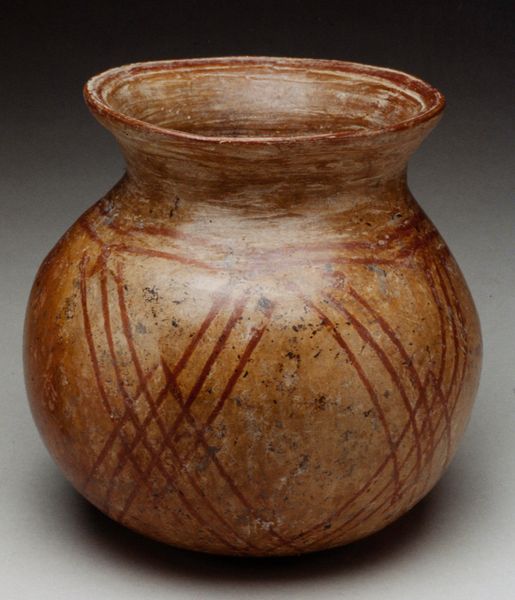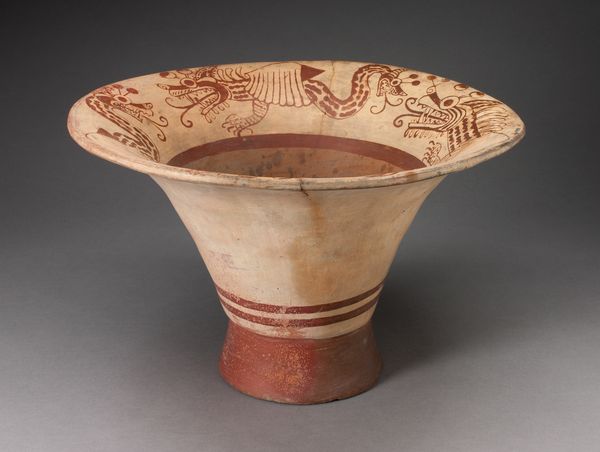
ceramic, earthenware
#
ceramic
#
earthenware
#
ceramic
#
indigenous-americas
Dimensions: 3 7/8 x 6 x 6 in. (9.8 x 15.2 x 15.2 cm)
Copyright: Public Domain
This bowl was created by the Chupícuaro people in modern-day Guanajuato, Mexico, using earthenware and paint. The bowl’s distinct features include its round shape supported by three legs, and its geometric patterns painted in reddish hues. This was not an industrial product, but an object formed by hand, likely using coils of clay that were then smoothed and fired in an open environment. The material and processes are crucial to understanding its significance. The earthenware gives it a weighty, grounded quality, while the painted geometric patterns suggest symbolic meaning, possibly related to Chupícuaro cosmology or social identity. The work involved in creating this bowl speaks to the resources and skills within the Chupícuaro community. It bridges what we often separate into the categories of art, craft, and design. Rather than seeing it as one or the other, we can appreciate the bowl as a product of human ingenuity, skill, and cultural expression.
Comments
No comments
Be the first to comment and join the conversation on the ultimate creative platform.
